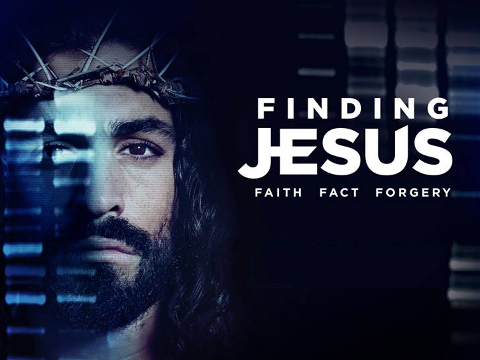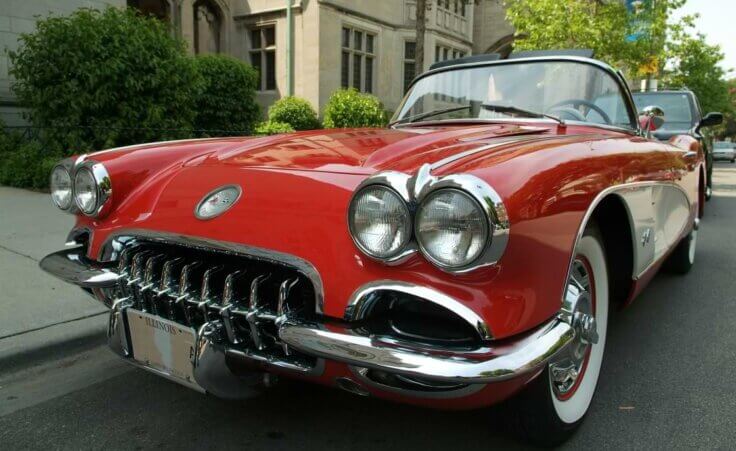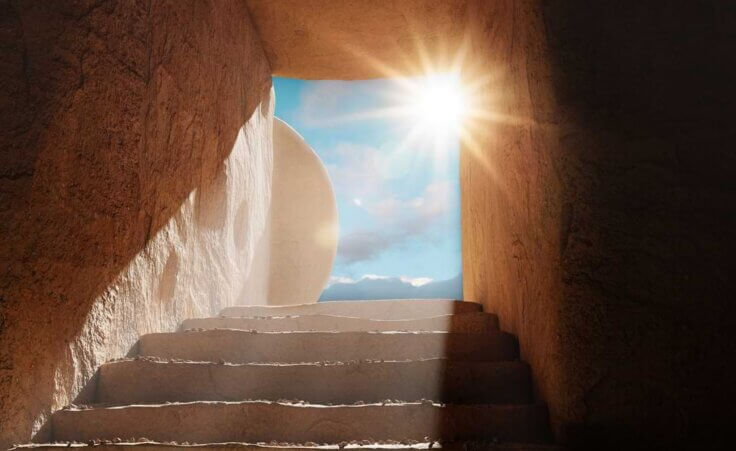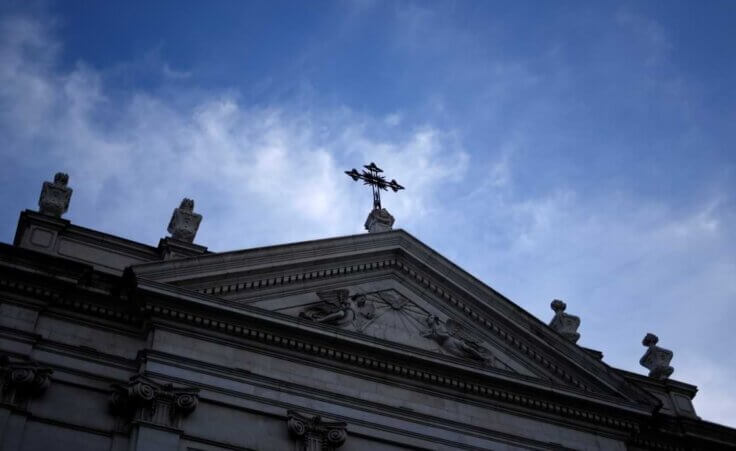
Finding Jesus: Faith. Fact. Forgery. is a new series that began Sunday night on CNN. Based on the book by the same title, the episodes will report on various Christian relics and their significance. Future episodes will focus on a relic believed to be a bone from the finger of John the Baptist, an ancient manuscript relating to Judas, a burial box purported to belong to Jesus’ half-brother, pieces of the cross, and ancient texts regarding Mary Magdalene.
Sunday’s episode focused on the Shroud of Turin, a cloth believed by many to be the burial shroud of Jesus. According to one of the narrators, discovering that the shroud is authentic “is the most significant moment in human history.”
What the documentary told us
The episode began by giving us the history of the shroud. It took us to a cathedral in Turin, a town in northern Italy where the shroud is kept. Fourteen feet long, it lies protected by bullet-proof glass. It was last displayed publicly in 2010, when more than two million visitors came to see it.
The image on the shroud looks like a photographic negative. It clearly depicts a crucifixion victim, complete with bloody marks from scourging, wounds in the wrists and forehead, and even what could be evidence of a spear thrust into the side. The image matches perfectly the biblical descriptions of Jesus’ death.
More than 1,300 years after Good Friday, a burial shroud appeared in a small village in northeastern France. When it was moved to Turin, 40,000 people welcomed it. In 1898, it became a global phenomenon when an Italian named Secondo Pia took the world’s first photograph of the shroud.
In 1978, a former U.S. Air Force physicist named John Jackson, working with the Shroud of Turin Research Project, was given unprecedented access to study the relic. Leading a team of 40 scientists, he set out to investigate the shroud scientifically. Working around the clock for five days, his team reached conclusions that seemed to advance the authenticity of the shroud.
According to Jackson, the fibers themselves are all individually colored, with no evidence of paint medium. Micro-chemical analysis concluded that the blood stains were made by actual human blood. After 40 years of study, Jackson has concluded that the shroud matches the biblical descriptions in every way. However, he was not allowed to take samples that would permit him to date the shroud.
To this point, the CNN documentary seemed clearly to argue for the shroud as authentic. Its apologetic effect regarding the accuracy of the gospel records and authenticity of Jesus’ suffering and death was powerful.
Then, after a commercial break, the other shoe fell. The episode told us that samples were cut from the edges of the shroud in 1988. They were sent for carbon testing to laboratories in London, Zurich, and Arizona. Their conclusion: the piece of linen is not from the time of Christ. Instead, they reported, the shroud dates to the 13th century. As one person interviewed in the documentary states, “There’s no way this could have been the burial shroud of Jesus Christ.”
The documentary then told us about numerous medieval forgeries made for financial gain, with the clear implication that the shroud was one such relic. It provided an explanation for the shroud’s creation, pointing to a South African art historian who thinks he has discovered the “camera obscura” technique used to make it. At this point we were led to believe that the shroud is an elaborate forgery. And we were left to wonder if all such evidence for Christianity is similarly flawed.
Toward the very end of the episode, however, we were told about another ancient artifact called the Sudarium of Oviedo, a town in northern Spain. Some believe that this cloth was used to cover Jesus’ face after his crucifixion. Documents place it in Jerusalem at least 700 years before the shroud. Amazingly, its blood stains match identically those from the facial area of the shroud.
The CNN documentary ended with the opinion of two scholars regarding the authenticity of the shroud. One says, “My gut tells me that it’s real.” The other is skeptical.
What the documentary didn’t tell us
My interest today is not in the authenticity of the Shroud of Turin. I have not spent much time studying the issue, for the simple reason that the shroud, even if authentic, doesn’t tell us anything we don’t already know from non-biblical evidence.
Roman writers such as Tacitus, Pliny the Younger, Suetonius, Josephus, and Mara bar Serapion document the historical fact that Jesus of Nazareth was crucified and buried, and that his followers believed him to be raised from the dead. (For more on non-biblical evidence for Jesus, see my essay Why Jesus? and book, Wrestling With God.)
The only element of the shroud story that would be new evidence is the possibility that its image was generated by a light burst from within the burial cloth, perhaps evidence for Jesus’ resurrection. But there has never been a conclusive way to explain the image or its origins.
My interest in CNN’s episode is not with what it told us, but with what it did not. The documentary left us with the clear conclusion that the shroud was a medieval forgery, with obvious implications for the veracity of Christian theology and faith. But 10 minutes of Internet research revealed at least five important facts regarding the 1988 carbon testing that supposedly exposed the shroud as a fraud.
2. The fringes used to date the shroud may have been part of medieval repairs done to the cloth after a fire.
3. Infrared light and Raman Spectroscopy have purportedly dated the shroud to the first century.
4. In 2011, Italian scientists determined that the image was created by UV lights, technology unavailable in the 14th century.
5. Scientists still cannot replicate the cloth today, leading many to doubt that it could have been created in the 14th century.
My point is not that the Shroud of Turin is or is not authentic. It is that very brief Internet research revealed important facts that were left out of the documentary and weaken significantly its argument against the shroud’s veracity. I don’t know if the fault lies with CNN, or with the book on which its documentary was based. (I have ordered the book, and will know soon.) But I am left to wonder about the motives of those who reported the story so incompletely, with such bias against the authenticity of Christian evidence and faith.
Here’s what we know as historical fact: “Christ died for our sins in accordance with the Scriptures, he was buried [and] was raised on the third day in accordance with the Scriptures” (1 Corinthians 15:3-4). Here’s what we can believe based on first-century records and 20 centuries of changed lives: he was raised from the dead.
Here’s what I know today: Jesus is alive, for he is alive in my life. In 1966, a Time magazine cover story asked, “Is God Dead?” Someone asked Billy Graham about the controversy. He smiled and said, “I can assure you he’s not dead. I spoke with him this morning.”
So can you.













